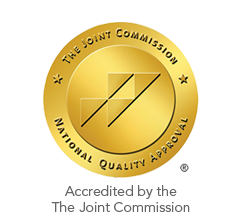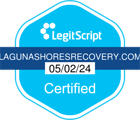Most people who get addicted probably do not plan on making substance use an addictive habit. They might wonder when and how using drugs and alcohol turned into an addiction that is so hard to break from. If you can identify the warning signs of an addictive tendency, substance use does not have to become a slippery slope to substance abuse.
The danger lies in being unaware of or in denial about the problem. This is also where intervention and recovery need to happen by raising self-awareness about the tricky condition of addiction. Understanding the “slippery slope” nature of addiction can help identify risk factors and start intervention at the earliest possible time.
What Are the Stages of Addiction?
The “slippery slope” analogy describes an almost inescapable gravity-like effect when a person begins using or drinking, which pulls someone deeper into chronic addiction. For many people, early use of drugs and alcohol is usually a kind of experimenting. It may happen in a social setting where they feel peer pressured to try drugs or drink. It could be that a prescribed drug becomes a crutch, and they become addicted to its effects. At this point, an addicted individual may enjoy the feeling you get with occasional use.
The next stage of this slippery slope pattern is using or drinking with increasing regularity. An addicted person may reach a point where they feel the need to use every day, and drugs and alcohol are part of their daily life. Their absence can lead to stress and anxiety. This is a progressive stage when changes in your physiological and mental state take place. The pathways of chemistry and the anatomy of neurons are altered when a person uses substances frequently. Even if they decide to reduce or quit use, they may experience withdrawal symptoms, including anxiety, trouble sleeping, nausea, diarrhea, hot flashes, excessive sweating, or body aches. Some drugs may even have long-term or permanent impacts on the brain.
Over time, after daily use of drugs and alcohol, the body comes to depend on them to function. People who have drug addictions may find it challenging to perform daily tasks without them. This is an incredibly dangerous phase of chronic addiction. The initial pleasure is gone, and more negative emotions, including stress, anger, numbness, and anxiety, show up. Their body has come to learn to deal with these emotions by self-medicating with the same drugs and alcohol that cause these symptoms in the first place. Mentally, they can develop self-loathing and shame. They might feel stuck with no motivation to change.
What Are the Warning Signs of Being on a Slippery Slope?
Although developing chronic addiction is a long process, there are many warning signs along the way. Before substance use turns from a pleasure activity to a hard-wired disease, behavioral red flags show someone may be on a slippery slope. On a physical level, chronically addicted individuals experience changes in their appearance, including changes in weight and appetite, fatigue, and unhealthy hair and skin.
Behavioral changes may also occur, such as the disappearance of positive emotions, decreased motivation, and little or no interest in activities they used to love. Accompanying these lack of positive traits, they might feel increased irritability and aggression. These are also symptoms of worsening depression, anxiety, and compulsive behavior.
Family and friends might feel that an addicted individual is showing some unusual and out-of-character behaviors. This is because the cravings for drugs and alcohol can generate these dysfunctions. Another danger is the temptation to experiment with harsher drugs because the brain and body can’t achieve the same high as your usual drugs.
Where Does This Slippery Slope Lead?
Unfortunately, many people with chronic addiction eventually transfer these negative changes into disrupted family and social relationships through lies and isolation. Addiction causes a lot of guilt and shame, so people may fear seeking help. Some with substance use disorder find comfort in befriending other people who use, which can present more pressure and enabling to occur.
Many families and friendships suffer pain because the addicted person changes social circles, and some may cut ties with an addicted individual. As a result, addicted persons may be left vulnerable to toxic relationships characterized by aggression, violence, and more substance use.
Despite all these risks, no matter how the addiction has progressed, there is always hope for recovery. Being knowledgeable of the stages of addiction can help people recognize it and seek help as soon as possible. Of course, it is ideal to seek professional help early to prevent the addiction from worsening. Still, even the worst situation can be redeemed if an addicted individual can awaken to their need for help. There is always support available, and many have walked seemingly impossible journeys toward recovery.
Chronic addiction does not develop in a day. For you or your loved one, there are warning signs to watch out for. It is always better to intervene at an early stage before addiction tightens its grip and damages your health. If you or your loved one needs help in achieving lasting, rewarding recovery, please contact Laguna Shores Recovery. Do not wait another day! You will experience the benefits of innovative, holistic treatment. We strive to provide catered programs to ensure the best treatment for you. Schedule an appointment with a licensed mental healthcare professional or therapist at Laguna Shores Recovery. We believe in holistic recovery, and we are here to listen, coach, and walk alongside you. We are a complete medical and residential facility offering a range of treatments, including diagnosis, behavioral therapies, 12-step programs, and treatment plans. Call us at 954-688-5806, and we would be happy to walk alongside you.

 Matthew Beck B.A, M.A, LMFT
Matthew Beck B.A, M.A, LMFT 


